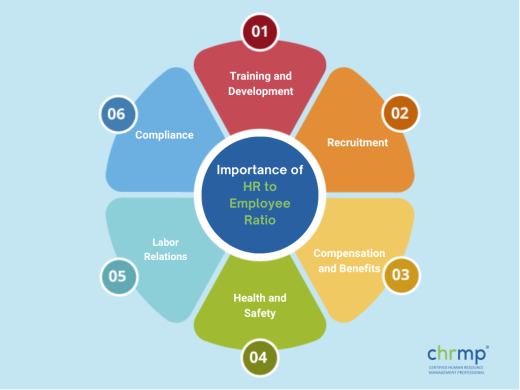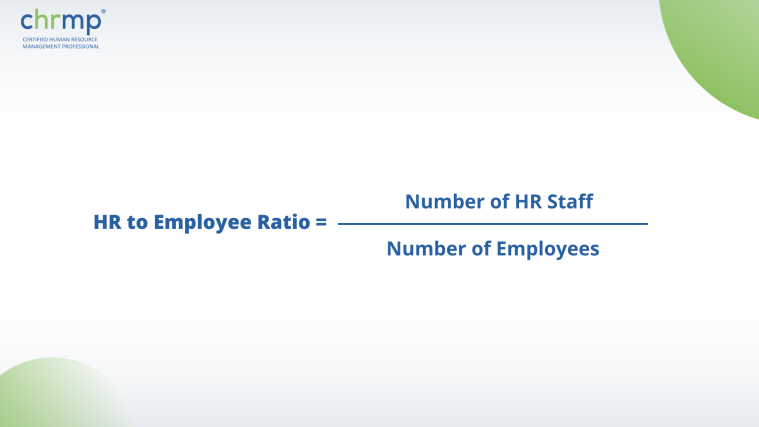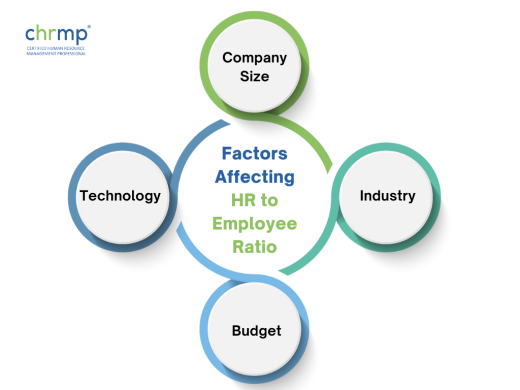

If you’re reading this, it’s safe to say that you’re interested in understanding the critical relationship between HR and employees in your organisation. It is an essential tool to quantify this aspect of the organisation and use it to drive success and improve its bottom line.
So whether you’re a seasoned HR professional or a newcomer in the HR world, this guide is packed with valuable insights and practical tips that you can immediately put into action.
This blog will discuss the HR-to-employee ratio, its importance, the formula to calculate it, and much more. So, buckle up, grab a cup of coffee, and let’s start!
The HR to Employee Ratio refers to the proportion of HR staff which manages and supervises the total number of employees in a company or organisation. It is a key metric used to determine the adequacy of HR support for the workforce and is expressed as the number of HR staff per hundred or thousand employees of the organisation.
This ratio can provide insight into the level of organisational resources and support HR provides to cater to employee management. It also helps organisations assess whether they have the right balance of HR staff to manage the workforce effectively, consistent with the organisation’s goals. The ideal ratio can vary depending on factors such as the size, industry, final products and complexity of the organisation.
The HR to Employee Ratio is important because it directly impacts the HR department’s ability to manage several essential HR functions, including:

HR should have ample time and resources to design, deliver, and evaluate training programs to support employee growth and development. An appropriate ratio ensures just that. HR to employee ratio should be judiciously calculated after accurate and multiple surveys and meticulous employee studies.
HR is responsible for attracting, hiring, onboarding and training new employees, and an adequate ratio is critical to ensure that the process is efficient, smooth and effective. Training and development programs for existing employees have also to be kept in mind.
HR is responsible for developing and administering compensation and benefits programs that are fair and competitive, and an adequate ratio is necessary to ensure that HR has the time and resources to analyse, allocate and administer funds, make recommendations, and implement changes that are fair, satisfactory and competitive according to industry standards to all employees of the organisation.
HR is responsible for ensuring that the workplace is safe and healthy for employees, and an adequate ratio is critical to ensure that HR has the time and resources to implement safety programs, monitor compliance, and respond to employee concerns. Adequate work area, ample time for tasks allocated, compliance with health and safety, govt. as well as company guidelines, satisfactory compensation and benefits package allocation by HR. The organisation needs to be adequately staffed to drive the workforce efficiently and in a disciplined manner.
HR is responsible for managing employee relations and resolving workplace disputes, and an adequate ratio is necessary to ensure that HR has the time and resources to respond to employee issues and maintain positive relationships with labour unions, if applicable.
HR is responsible for ensuring that the organisation is in compliance with all relevant govt. And company laws, rules and regulations, so an adequate ratio is important to ensure that HR has the time and resources to monitor compliance, respond to audits, and implement changes as needed.
The ratio is calculated by dividing the total number of HR staff by the total number of employees in the organisation. The formula is:

For example, if an organisation has 50 HR staff and 1,000 employees, the HR to Employee Ratio would be:
HR to Employee Ratio = 50 / 1,000 = 0.05 or 5%
It’s important to note that the ratio can be expressed as a percentage or as a decimal, and it can also be expressed as the number of HR staff per hundred or thousand employees. The choice of expression will depend on the specific needs of the company and the context in which the ratio is being used.
The HR to Employee Ratio can be influenced by several factors, including:

The size of a company is a major factor that decides the ratio. In general, larger companies require more HR support to manage the needs of their larger workforce. As a result, larger companies may have a higher HR to Employee Ratio than smaller companies.
The industry in which a company operates also affects the ratio. For example, companies in regulated industries, such as healthcare or finance, may require more HR support to manage compliance with complex regulations. As a result, these companies may have a higher HR to Employee Ratio than companies in less regulated industries.
The budget available for HR can also influence the HR to Employee Ratio. Organisations with limited budgets may have a lower HR to Employee Ratio, as they may not be able to afford to hire additional HR staff. On the other hand, organisations with larger budgets may have a higher HR to Employee Ratio, as they have the resources to hire more HR staff to support their workforce. So budget for HR to employee ratio is company specific depending upon the size and the kind of end-product.
Advances in technology also influence the HR to Employee Ratio. For example, the use of automation and artificial intelligence in HR can reduce the need for manual labour, allowing HR to handle more tasks with fewer staff. As a result, organisations that adopt these technologies may have a lower ratio than those that do not; on the other hand, some industries are more labour-intensive, thus needing a higher HR-to-employee ratio.
The ideal HR to Employee Ratio varies widely and depends on several factors, like the size of the company, complexity, end product, and industry of the organisation. If the company is more technology-intensive rather than labor-intensive, the ratio is going to be a low one, and the other way round for labour-intensive industries. There is no one-size-fits-all answer to what constitutes a “good” HR to Employee Ratio, but judiciousness is the key word rather than wastefulness.
For small organisations (less than 100 employees), a ratio of 1:10 to 1:15 is often considered adequate. This means that for every 10 to 15 employees, there is one HR staff member.
For larger organisations (more than 1,000 employees), an HR to Employee Ratio of 1:100 to 1:200 is often used. This means that for every 100 to 200 employees, there is one HR staff member.
In industries such as healthcare or finance, a higher HR to Employee Ratio may be required to manage complex regulations, intense workloads, criticality of patients and compliance requirements.
It’s important to note that these are just benchmarks, and the ideal HR to Employee Ratio will depend on the specific needs and goals of the organisation. To determine the ideal HR to Employee Ratio for a particular organisation, HR leaders should consider the size, complexity, and industry of the organisation, as well as the budget and technology and labour intensity available to support HR.
There is no one size fits all rule for how many employees a company must have to justify having an HR function. The size of the HR function should be determined based on the specific needs and goals of the company.
In smaller organisations with 20-30 employees, a single HR staff member may be sufficient to manage HR responsibilities. In larger organisations with more than 1,000 employees, a more robust HR team with multiple staff members may be necessary to manage the needs of a larger workforce.
Ultimately, the decision of whether to have an HR function and how many staff to dedicate to HR should be based on an assessment of the organisation’s needs and goals, as well as its budget and resources. The goal should be to ensure that HR is able to effectively support the organisation’s workforce and contribute to the organisation’s success.
Managing HR to employee ratio is an important practice for optimising HR efficiency, improving organisational performance, and controlling HR costs.
Here are 5 best practices to manage HR to employee ratio:

1.Optimize HR processes and technology:
One of the most effective ways to manage HR to employee ratio is by optimising HR processes and leveraging technology to streamline tasks such as recruitment, onboarding, and benefits administration. By automating and streamlining administrative tasks, HR teams can operate more efficiently and effectively, reducing the need for additional staff.
2.Invest in employee development:
Investing in employee development is another way to improve HR to employee ratio. By providing employees with the training and resources they need to be successful in their roles, organisations can reduce turnover and increase productivity, which in turn can reduce the need for additional HR staff.
3.Outsource HR functions:
Outsourcing some HR functions such as payroll, benefits administration, and recruiting can be an effective way to manage HR to employee ratio. By leveraging the expertise of third-party providers, organisations can reduce the need for additional HR staff while still ensuring that HR tasks are completed accurately and efficiently.
4.Use data to make informed decisions:
By using data to inform HR decisions, organisations can optimise their HR-to-employee ratio. For example, analysing data on employee turnover can help organisations identify areas where they may need to invest in employee development or improve their hiring processes.
5.Focus on employee engagement:
By focusing on employee engagement and creating a positive work culture, organisations can reduce the need for additional HR staff by increasing employee retention and reducing turnover. Engaged employees are also more productive and more likely to contribute to the success of the organisation, which can help optimise HR to employee ratio over the long term.
1.What is the HR to Employee Ratio?
The HR to Employee Ratio is the proportion of HR staff in an organisation compared to the total number of employees. It is typically calculated by dividing the number of HR staff by the number of employees and expressing the result as a percentage or decimal.
2.Why is the HR to Employee Ratio important?
The HR to Employee Ratio provides an indication of the level of HR support available in an organisation. It can help organisations assess the adequacy of HR support and make decisions about staffing levels, budget allocation, and technology investment.
3.What is a good HR to Employee Ratio?
There is no one-size-fits-all answer to what constitutes a good HR to Employee Ratio. The ideal ratio will depend on the specific needs,goals and objectives of the organisation, as well as its size, complexity, industry, budget, technology and labour intensity .
4.How do factors such as company size, industry, budget, technology and labour intensity influence the HR to Employee Ratio?
Larger companies may require more HR support, while companies in regulated industries may require more HR support to manage compliance. Organisations with limited budgets may have a lower HR to Employee Ratio, while those with larger budgets may have a higher ratio. The use of automation and artificial intelligence in HR can reduce the need for manual labour and lower the HR to Employee Ratio. However, industries like healthcare and finance are more professional intensive, so the HR to Employee ratio could be higher.
5.How do I determine the ideal HR to Employee Ratio for my organisation?
To determine the ideal HR to Employee Ratio for our organisation, we should consider our organisation’s size, complexity, industry, budget, technology, labour, as well as our goals, objectives and the specific needs of our workforce. We should also consider benchmarking our HR to Employee Ratio against industry standards or best practices.
In conclusion, the HR to Employee Ratio is a valuable metric that provides insight into the level of HR support available in an organisation.
It can help organisations assess their staffing levels, budget allocation, technology and labour investment and make informed decisions about the resources they dedicate to HR.
Ultimately, the goal of the HR to Employee Ratio is to ensure that HR is able to effectively support the organisation’s workforce and contribute to the organisation’s success.
By understanding the HR to Employee Ratio and the factors that influence it, organisations can make informed decisions about the resources they dedicate to HR and ensure that they have the support they need to succeed in guiding their workforce without strikes, strife or friction.
© 2007-2025 CHRMP| All Rights Reserved | Powered by Ripples Learning & Research Private Limited
